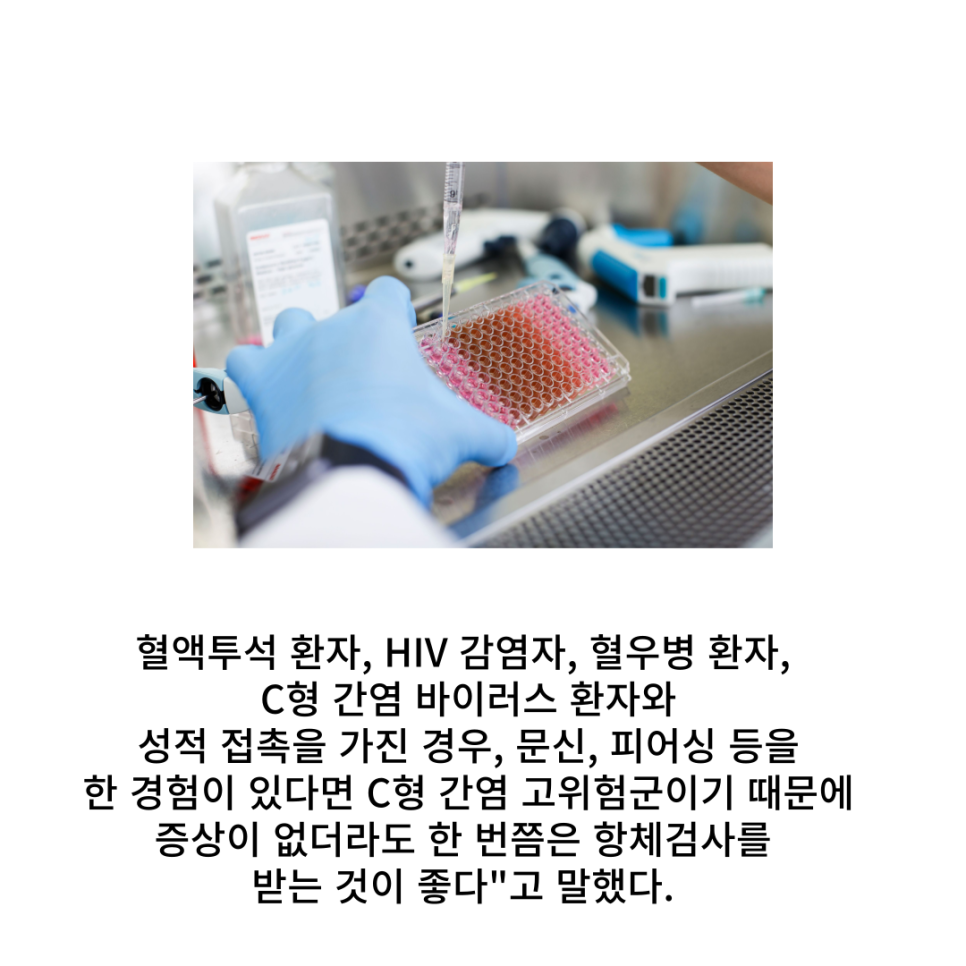What should you be careful about if you have tattoos and piercings?
What should you be careful about if you have tattoos and piercings?
Hepatitis C is a disease to be cautious of when getting a tattoo or piercing.
Hepatitis C is caused by a viral infection, similar to COVID-19.
Since it is transmitted through blood or bodily fluids, unsterilized injections such as illegal procedures or acupuncture with unsterilized needles can lead to transmission.
Getting a tattoo increases the risk of infection. Hepatitis C is identified as the cause of approximately 15% of liver cancer cases in the country.
In addition to the most common hepatitis B in the country, hepatitis C, if left untreated, can also cause cirrhosis and liver cancer.
It is a "serious disease," and it takes an average of 30 years to develop into cirrhosis, but
Except for some patients, over 70% are asymptomatic and difficult for the patient to recognize.
Precautions to take when getting a tattoo or piercing
There is hepatitis C due to the disease.
It is estimated that approximately 300,000 people in our country are infected with hepatitis C.
Every year, approximately 2,000 to 3,000 new infections occur. If the virus remains after three months of infection
Most cases develop into chronic hepatitis C.
Many cases of hepatitis C go unnoticed if blood tests are not conducted.
Not all patients with acute hepatitis C progress to chronic hepatitis C, but
There is a very high likelihood that it will progress to a chronic stage. About 50 to 80% of patients with acute hepatitis C progress to a chronic stage.
30 to 40% of chronic hepatitis C cases progress to cirrhosis or liver cancer.
The diagnosis involves a screening test to check for the presence of antibodies against the hepatitis C virus.
There is a diagnostic test that confirms the presence of blood-borne viral genes using PCR. However, individuals voluntarily
It is difficult to confirm unless related tests are conducted.
Hepatitis C can be cured with approximately 2 to 3 months of medication treatment due to advances in therapy.
There is still no preventive vaccine, but recently, oral antiviral drugs have been developed, leading to drug-based treatment.
The cure rate is as high as 98%, and complications from treatment are also very rare.
Although it is an expensive new drug, it is covered by national insurance and is known to be excellent for preventing cirrhosis and liver cancer.
As a result of 2 to 3 months of medication, a cure for chronic hepatitis C has become possible.
It is more important to identify asymptomatic patients and proceed with treatment.
If liver enzyme levels are elevated during a health checkup, testing for hepatitis C is recommended, and even after medication treatment,
If liver fibrosis is progressing, it should be monitored regularly through follow-up examinations.




